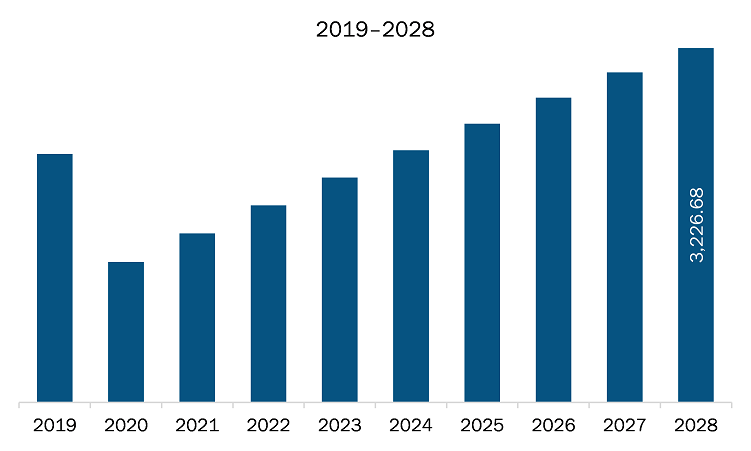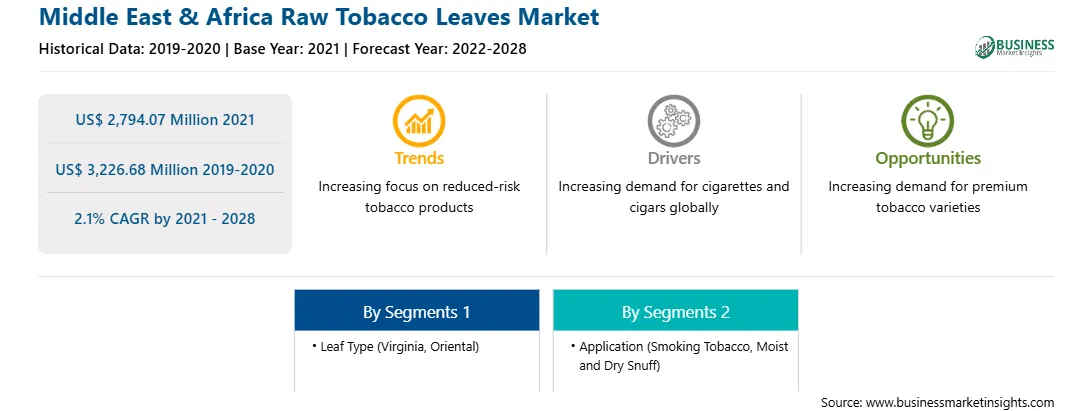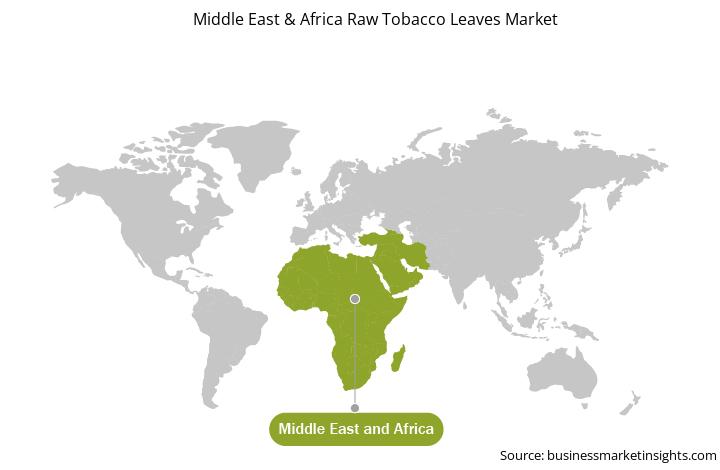The raw tobacco leaves market in the Middle East & Africa is segmented into South Africa, Saudi Arabia, the UAE, and the Rest of the MEA. Most African governments are supporting tobacco planting from an economic standpoint as tobacco production increases tax revenue; boosts farmers' employment and income, especially cash income; and alleviates household poverty. Tobacco farming uses less fertile land that might otherwise be unused. Despite a global decrease in tobacco consumption, its use continues to rise across the Middle East and Africa, providing a substantial public health risk. For instance, according to World Health Organization (WHO) 13 million women in Africa use tobacco products, such as chewing tobacco and snuff, and 13% of young adolescent girls consume tobacco products. Tobacco usage among girls has been on the rise in recent years. Tobacco consumption among females was formerly lower than that of boys. In addition, between 2002 and 2030, tobacco-related mortality is expected to rise in low and middle-income countries (LMICs), such as Africa. Although cigarettes account for the majority of this increase, alternative tobacco products such as dokha and shisha, which are popular in Middle Eastern countries, also contribute to it. Raw tobacco leaves are majorly used in the production of these products. For instance, shisha is fruit-flavored tobacco smoked in a water pipe and is made by using shredded tobacco leaves, glycerol, and other ingredients. Dokha is a tobacco leaf, bark, herb, dried fruits and flowers, and spice blend that is smoked through a specialty pipe (midwakh) and has a far higher nicotine concentration than cigarettes. The rising popularity of shisha and dokha would significantly fuel the growth of the raw tobacco leaves market in the region.
Turkey has the highest number of COVID-19 cases in the Middle East and Africa, followed by South Africa and the UAE, among others. The UAE was the first country in the Middle East & Africa to report a confirmed case of COVID-19. Due to the pandemic, there were strict lockdown in the Middle East and African countries, the lockdown scenario has affected and hampered the supply chain of the raw tobacco leaves market. The non-availability of raw materials and labor, owing to the restrictions on the movement of people, also various food and beverages companies remain closed which led to the reduction in the sale of various products which has negatively impacted the market for raw tobacco leaves market in the region.

Strategic insights for the Middle East & Africa Raw Tobacco Leaves provides data-driven analysis of the industry landscape, including current trends, key players, and regional nuances. These insights offer actionable recommendations, enabling readers to differentiate themselves from competitors by identifying untapped segments or developing unique value propositions. Leveraging data analytics, these insights help industry players anticipate the market shifts, whether investors, manufacturers, or other stakeholders. A future-oriented perspective is essential, helping stakeholders anticipate market shifts and position themselves for long-term success in this dynamic region. Ultimately, effective strategic insights empower readers to make informed decisions that drive profitability and achieve their business objectives within the market.

| Report Attribute | Details |
|---|---|
| Market size in 2021 | US$ 2,794.07 Million |
| Market Size by 2028 | US$ 3,226.68 Million |
| Global CAGR (2021 - 2028) | 2.1% |
| Historical Data | 2019-2020 |
| Forecast period | 2022-2028 |
| Segments Covered |
By Leaf Type
|
| Regions and Countries Covered | Middle East and Africa
|
| Market leaders and key company profiles |
The geographic scope of the Middle East & Africa Raw Tobacco Leaves refers to the specific areas in which a business operates and competes. Understanding local distinctions, such as diverse consumer preferences (e.g., demand for specific plug types or battery backup durations), varying economic conditions, and regulatory environments, is crucial for tailoring strategies to specific markets. Businesses can expand their reach by identifying underserved areas or adapting their offerings to meet local demands. A clear market focus allows for more effective resource allocation, targeted marketing campaigns, and better positioning against local competitors, ultimately driving growth in those targeted areas.

The raw tobacco leaves market in Middle East & Africa is expected to grow from US$ 2,794.07 million in 2021 to US$ 3,226.68 million by 2028; it is estimated to grow at a CAGR of 2.1% from 2021 to 2028. Tobacco is one of the main sources of tax revenue globally. The demand for tobacco products has recently witnessed a shift from developed countries to developing countries. This can be accredited to the rising population, increasing income levels, and lenient government regulations in certain countries. Retail infrastructure growth and widespread brand campaigns by leading tobacco-producing organizations, including Philip Morris International and British American Tobacco, are projected to remain positive factors for the market growth in the region. Multinational tobacco companies are focusing on increasing tobacco production in the emerging world for meeting the rising demand of their overseas markets with more readily available and cheaper tobacco leaves. With the availability of tobacco products, especially cigarettes, at relatively low prices in the developing countries it is making the substantial proportion of tobacco product consumer segment, the demand for raw tobacco leaves continues to propel.
In terms of leaf type, the Virginia segment accounted for the largest share of the Middle East & Africa raw tobacco leaves market in 2020. Further, in term of application, the smoking tobacco held a larger market share of the raw tobacco leaves market in 2020.
A few major primary and secondary sources referred to for preparing this report on the raw tobacco leaves market in Middle East & Africa are company websites, annual reports, financial reports, national government documents, and statistical database, among others. Major companies listed in the report are Universal Corporation; Sopariwala Exports; Alliance One International Inc.; Japan Tobacco International; British American Tobacco plc; Star Agritech International; BBM Bommidala Group; U.S. and Tobacco Cooperative Inc. among others.
The Middle East & Africa Raw Tobacco Leaves Market is valued at US$ 2,794.07 Million in 2021, it is projected to reach US$ 3,226.68 Million by 2028.
As per our report Middle East & Africa Raw Tobacco Leaves Market, the market size is valued at US$ 2,794.07 Million in 2021, projecting it to reach US$ 3,226.68 Million by 2028. This translates to a CAGR of approximately 2.1% during the forecast period.
The Middle East & Africa Raw Tobacco Leaves Market report typically cover these key segments-
The historic period, base year, and forecast period can vary slightly depending on the specific market research report. However, for the Middle East & Africa Raw Tobacco Leaves Market report:
The Middle East & Africa Raw Tobacco Leaves Market is populated by several key players, each contributing to its growth and innovation. Some of the major players include:
The Middle East & Africa Raw Tobacco Leaves Market report is valuable for diverse stakeholders, including:
Essentially, anyone involved in or considering involvement in the Middle East & Africa Raw Tobacco Leaves Market value chain can benefit from the information contained in a comprehensive market report.